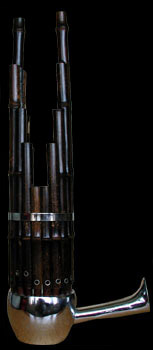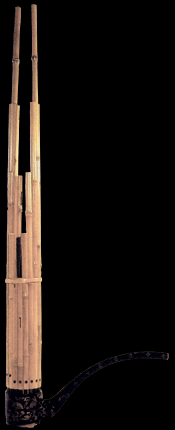
sheng
|
|
Sheng
The sheng is the Chinese free-reed bamboo mouth organ. Its age is unknown, but it can be seen in pictographs dating from 1200 BC with a gourd wind chamber, and looks very similar to the current southern Chinese and northern Thai naw. The sheng was traditionally used in court music, and there are many depictions of the ancient sheng, known then as yu, on the wall paintings of the Dunhuang caves from the 7th and 8th Centuries. It was during this period that the sheng traveled to many of the courts of Asia and according to some references, possibly even Persia in the 10th century. It is documented that it didn't reach Europe until 1777 with Pere Amiot, and its influence was so strong that it resulted in the invention of the reed organ, concertina, harmonica and accordion.
The sheng is now mainly identified with the Han culture (presently the dominant culture) of China, but can be found in a number of similar forms within some of China's minority cultures.
The sheng has only recently become a virtuoso instrument, and is used regularly in the Chinese traditional instrument orchestra. Modern instruments are constructed with brass reeds, 30 or more pipes, and metal wind chambers. Some contemporary instruments are also fitted with a keyboard.
Country: China
Region: Asia
Type: Free-reed
|
|

Yu |

